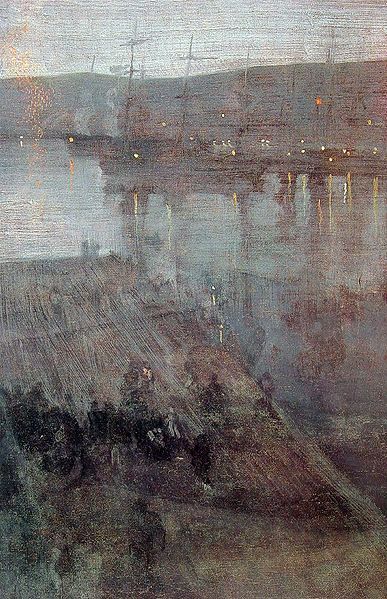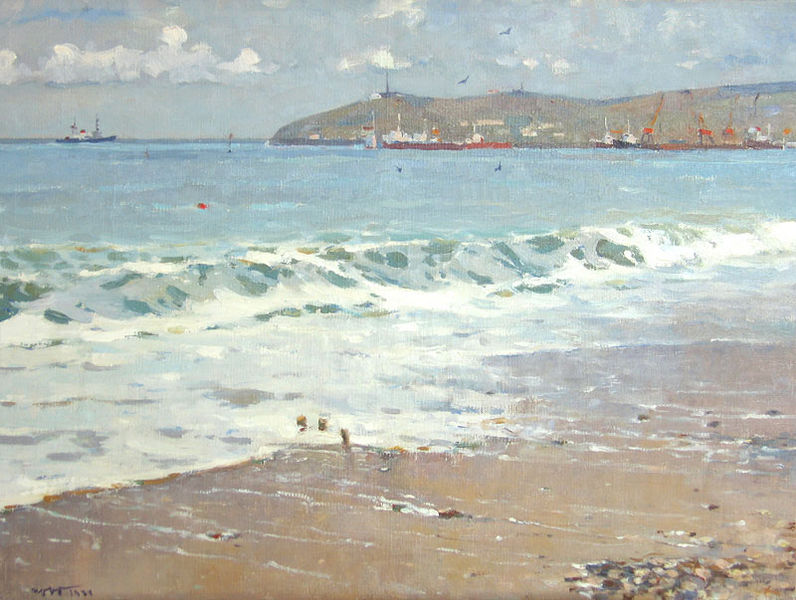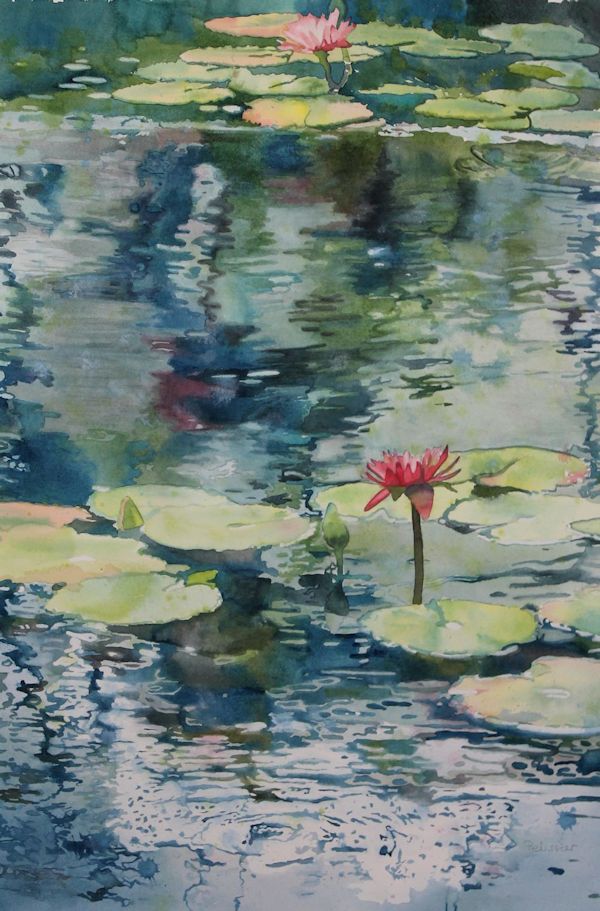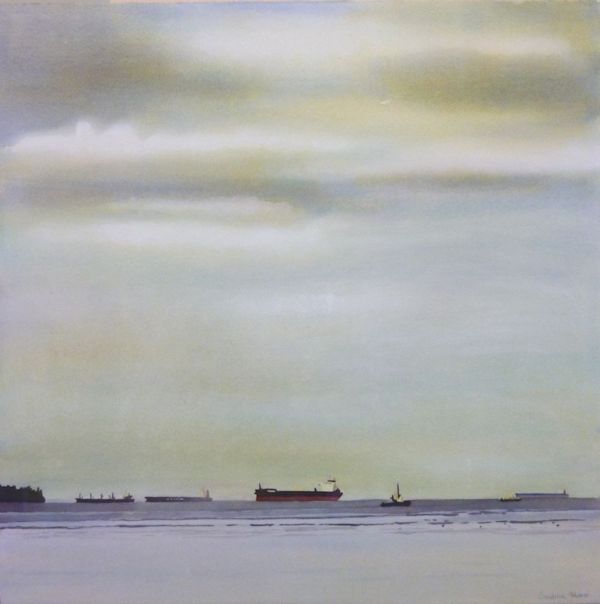Painting a body of water that looks realistic can be a great addition to a landscape but it also presents many challenges. There are many different ways water can be part of a landscape from a very still lake with mirror-like reflections to a very agitated waterfall, and there are many different styles of painting from photo realistic to abstract. Whatever your style is and the type of water you are painting, knowing what to look at can be very helpful when you’re practicing or just learning how to paint water.

Photo via Wikimedia Commons
In “Nocturne in Blue and Gold Valparaiso Bay” James Whistler rendered the reflections of boats in the water brilliantly in a semi-impressionistic loose style.
Ten things to keep in mind when painting water:
1. The color of the water.
Water itself has no color, but there could be some elements, like particles in suspension in the water, that could modify its color, like the turquoise of glacier lakes. So one of the first things to consider is the color of the water itself.
2. What is underneath the surface?
Can it be visible through the water? What is the color and texture of what is under the water? They may be a few objects, such as rocks, under the water. Usually, they will look darker in color when they are under water.

Photo via Wikimedia Commons
In Evgeny Chuprun’s “Pheodosia” the color of the sea is influenced by the colors of the sand.
3. Is there a reflection of what is above the surface?
Even in very still water, the reflections won’t be a simple mirror image of what is above the water. The color of reflections, for example, will be influenced by many factors, but in general, light to medium colors will appear darker and muted while very dark colors might appear a bit lighter. The shapes will appear to be more vertical.
4. Is there refraction of the light?
Refraction by little waves is causing the light patterns you can see on the sand or on a swimming pool floor.
5. How far are you from the water?
Your distance to the water is important as well, since water will become less reflective as it is closer to the viewer.
6. What is the light quality?
It will affect the color of the water.

In “Nymph Echo” by Sandrine Pelissier, the patterns of ripples and reflection are painted with both soft and hard edges.
7. What colors do you see in reflections?
Surprising colors, like red, might be found in reflections.
8. Consider layering.
Because you have so many factors to consider, painting water by layering will usually get better results than trying to paint it all at once. One method consists of painting each element independently: the substrate, color of water, refraction, reflection, etc.
9. Localize ripples and smooth areas.
Ripples will appear smaller and flatter as you move closer to the horizon line; they might look elliptical or parallel or have very complex shapes. When painting the sea, waves will appear more parallel, further away from the viewer. In a large body of water, there could be alternating areas with waves and no reflection and areas with calmer waters and reflections.

“Getting a New Perspective” by Sandrine Pelissier features alternating areas of calm water and areas with ripples on the sea.
10. When painting moving water, the more the water is moving, the less reflections you can see.
Moving water will create a very complex pattern of reflections to no reflection at all if the water is very agitated. Working from a photograph is often necessary, as it will be difficult to focus on an ever changing body of water. The difficulty is to render the movement of the water and not have it looked too frozen in time.

Share tips, start a discussion or ask one of our experts or other students a question.
No Responses to “Reflective Surfaces: Top 10 Tips for Painting Water”